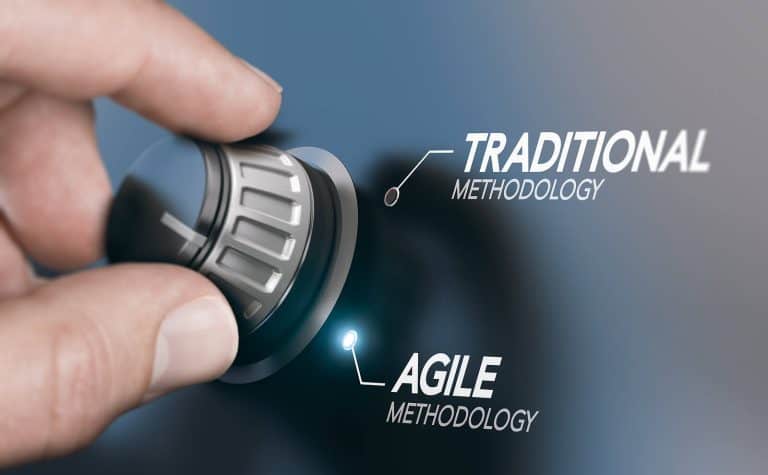
Any project management framework or methodology will provide structure and direction to your projects. Some, however, can be detailed and rigid. Most organizations today want something that guides projects to their goal while being flexible enough to adapt to evolving conditions. This is where agile approaches for managing projects are most suitable, particularly if you select one of the popular agile project management frameworks.
Table of Contents
ToggleScrum agile project management framework
Scrum agile project management is one of the most popular agile project management frameworks in use today. This approach uses an agile scrum process that mimics the agile scrum framework used for software development. Scrum for software development and projects both use fixed time-boxed sprints during which requirements are developed into products. The agile and scrum methodology approach for delivering projects and software both have roles defined for the scrum master, product owner, and scrum team. In essence, they are both designed to deliver products, and both are agile frameworks that follow the same principles. Hence both will look very similar if viewed at the agile methodology overview level.
Other frameworks for agile project management
Other popular agile project management frameworks include:
- Dynamic Systems Development Method (DSDM)
- Extreme Programming (XP)
- Feature-Driven Development (FDD)
- Kanban Project Management framework
- Scaled agile framework for project management (SAFe)
Each of these frameworks has its own champions, some claiming that they have the best. In reality, which of the popular agile project management frameworks is best for you will depend on a number of factors, including the existing skills and knowledge of your project management teams, the nature of the projects that you want to apply the framework to, the reasons for your adoption of the frameworks, the culture of your organization, and your attitude to risk.
Tips for selecting and implementing an agile framework for project management
Introducing any of the popular agile project management frameworks will be beneficial only if you take a practical approach towards implementing them. When any of the frameworks are forced onto a project or a team, then success is unlikely. On the contrary, if you make an effort to understand the nuances of the popular agile project management frameworks and tailor them to fit your business needs, you should improve your projects’ success.
Since there is an array of popular project management methodologies available in the market, it can be challenging to pick the right one. It’s a good idea to build a list of your requirements, categorizing those that are truly essential. You can then use these to evaluate the different methodologies, shortlisting only those that meet your essential requirements.
Ideally, it would be best if you piloted each of the shortlisted methodologies to see which best suits you. Ensure that you don’t get diverted by features that make you excited but that you don’t really need. Implementing any agile framework for project management isn’t a trivial activity; it will require investment in tools, time, training, and education. So take the time to decide which methodology is right for you.
Using the SAFe methodology for managing projects
One of the more recent popular project management methodologies that is rapidly taking off uses the scaled agile framework or SAFe. This is derived from much earlier frameworks, but the SAFe agile framework still uses small teams to deliver products incrementally in short iterations, focusing on the customer, and with an open culture using feedback to improve continually.
The concepts behind the SAFe framework for both software development and project management teams are built on three pillars: Team, Program, and Portfolio. SAFe agile is designed to give a team flexibility and to help manage some of the challenges larger organizations have when practicing agile. The agile SAFe methodology is designed not so much as a single methodology but as a broad knowledge base of proven best practices that real teams have used to deliver successful software products and projects.
The SAFe framework was first introduced in 2011. It was originally called the “Agile Enterprise Big Picture” by software-industry veteran Dean Leffingwell, who published the bestselling book Agile Software Requirements. The Big Picture described how to leverage existing agile frameworks such as Lean, Kanban, Scrum, and XP—and apply them at the Team, Program, and Portfolio levels. Today, SAFe’s entire catalog of knowledge and success patterns is all available for free and will soon become one of the most popular agile project management frameworks, as its application extends beyond developing software.
SAFe’s strengths include:
- Helping cross-functional teams collaborate more effectively.
- Helping organizations to achieve greater transparency in software development and project management.
- Aligning all aspects of a project to the broader business goals.
SAFe’s weaknesses include:
- Some believe that the framework requires too much upfront planning and process definition.
- It takes more of a top-down approach rather than a team-based approach.
Agile Project Management: Guiding Principles
SAFe is based on ten fundamental concepts that have evolved from the 12 principles, lean product development, systems thinking, and observation of successful enterprises. They can all be applied to the popular agile project management frameworks.
- #1 – Take an economic view by making every decision in a proper economic context.
- #2 – Apply systems thinking by understanding the systems within which workers and users operate. Such systems are complex, and they consist of many interrelated components. But optimizing a component does not optimize the system. To improve, everyone must understand the larger aim of the system.
- #3 – Assume variability; preserve options by maintaining multiple requirements and design options for as long a period as possible in the development cycle.
- #4 – Build incrementally with fast, integrated learning cycles, which allows for faster customer feedback and mitigates risk. Subsequent increments build on the previous ones.
- #5 – Base milestones on an objective evaluation of working systems. Integration points provide objective milestones at which to evaluate the solution throughout the development life cycle.
- #6 – Visualize and limit work in progress (WIP), reduce batch sizes, and manage queue lengths. This helps to maintain a state of continuous flow, where new system capabilities move quickly and visibly from concept to benefits.
- #7 – Apply cadence, synchronize with cross-domain planning. This creates predictability and provides a rhythm for development.
- #8 – Unlock the intrinsic motivation of knowledge workers by providing them with autonomy and purpose, minimizing constraints, and creating an environment of mutual influence.
- #9 – Decentralize decision-making to achieve fast delivery of value.
- #10 – Organize around value rather than principles.
Conclusion
There are several popular agile project management frameworks. Each of them has its champions and promoters who will claim that their framework is the best and who will give you plenty of reasons why the others aren’t suitable. The choice they made from the list of agile project management frameworks that were popular at the time of their selection has clearly worked for them. But will it be the right choice for you?
Every organization is different, every project management team is different, and new approaches for managing projects are being developed all the time. So don’t just automatically go for a framework that is popular. Evaluate what is available against your true requirements, but be prepared to change them as you see new features that could benefit how you manage projects. Depending on your attitude to risk, becoming a trailblazer for a new agile project management methodology could give you a competitive edge and transform how you deliver projects.





